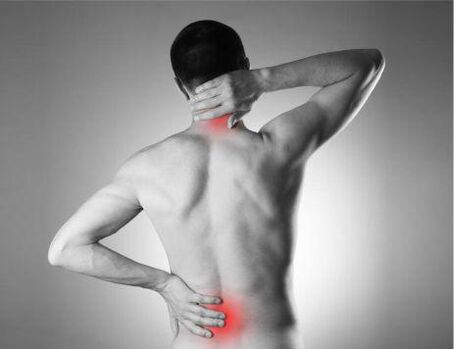With osteochondrosis, the structure and function of the intervertebral discs are impaired, which provide the spine with flexibility and mobility.As the disease intensifies, changes in the vertebrae occur in the vertebrae themselves.

The causes of osteochondrosis are internal (endogenous) and external (exogenous).
Endogenous causes include:
- a violation of the intrauterine development of the spine,
- hereditary predisposition and age -related changes in cartilage.
The main exogenous cause of osteochondrosis is the improper distribution of the load of the spine, which leads to a change in cartilage at excess pressure.
Provoke the disease:
- spinal trauma,
- infections,
- Weakened muscles on the back,
- Stope and lateral S-shaped curvature of the spine,
- Drug weights
- Long holding up an uncomfortable posture.
Osteochondrosis can develop not only in people with improper posture engaged in mental work, but also those who are well trained physically.
In addition to the mechanical causes of the development of osteochondrosis, they also lead to:
- metabolic disorders (mainly calcium and phosphorus),
- lack of trace elements and vitamins (magnesium, manganese, zinc, vitamin D),
- Hereditary predisposition plays a very big role.
When lifting weights, jumps, falls, static loads, micro injuries occur on intervertebral discs.If this happens systematically, the damaged intervertebral discs lose their elastic properties over time, equalization and the distance between the vertebrae decreases.And this means that the nerve roots extending from the spinal cord are squeezed, pain occurs.At the same time, the swelling occurs in the neuro-vascular package click, leading to even greater disorder and increased pain.If the intervertebral disc has already begun to collapse, it ceases to be depreciated, it is wounded even more and gradually the spine loses its flexibility.
The main sign of osteochondrosis is pain.Depending on where the damaged intervertebral discs are, they can harm: neck, shoulder, arm, back and even a crate.Sometimes one thinks that there are heart problems, but in fact it hurts a nerve compressed as a result of osteochondrosis.At the same time with pain, one often feels over -tension and tingling of the muscles.If the blood vessels that feed the brain are drained, headache, dizziness, tinnitus, double eyes, nausea and vomiting, seizures appear.
You should contact such complaints to the neurologist.He will look at the spine, check how things are with cerebral circulation, and if necessary, prescribe radiography, computer or magnetic resonance imaging of the respective spine.
Treatment of osteochondrosis is a long process that requires a person with great willpower and free time.To date, there are many methods for combating the disease: medicine, manual therapy, grip, massage and therapeutic gymnastics.
Tips to prevent radiculitis and osteochondrosis:
- Timely correction of spinal curvature and posture disorders at early school age.
- Actively participate in physical education that will allow you to form a muscle corset.
- Stick to a diet, consuming products with sufficient content of vitamins, calcium and magnesium (fish and other gifts on the sea, cabbage, spinach, beans, nuts, seeds, peas, rough bread and fresh milk).
- Fighting over excess weight.
- When wearing weights, provide a uniform load on both hands, wear backpacks instead of bags.Lift weights only with the use of the legs, not from the spine.


















